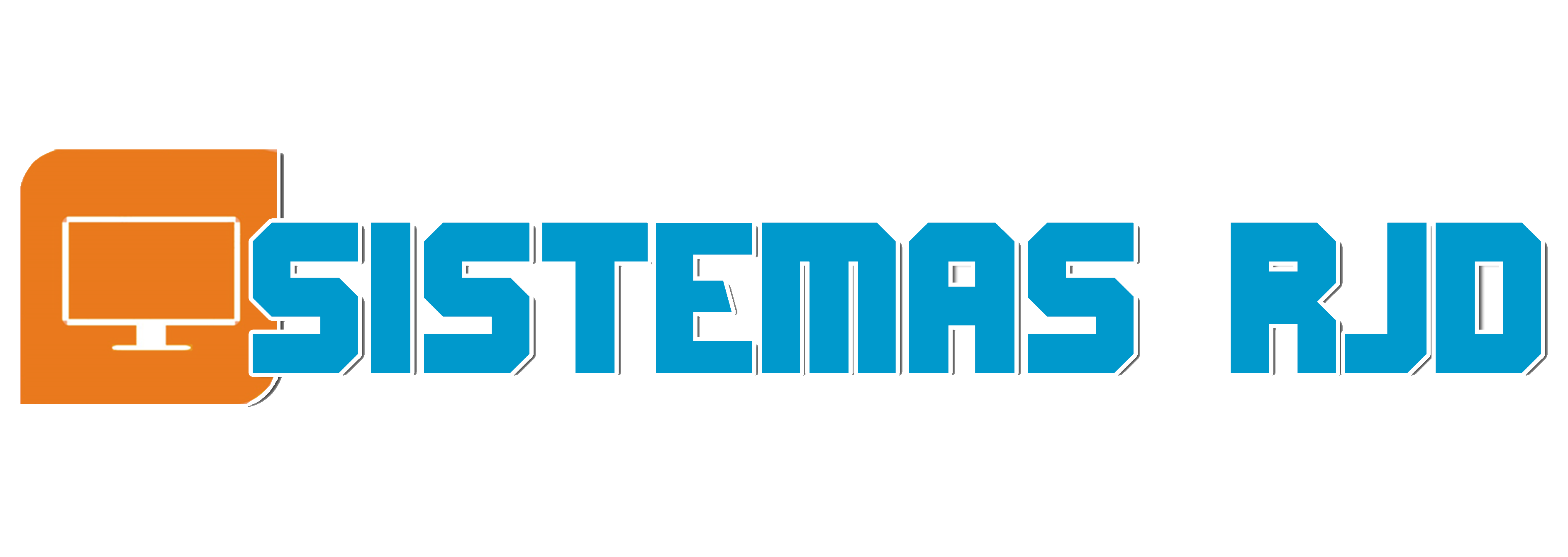The Central Processing Unit (CPU) is the main component of a personal computer, and as such, it's important to select it appropriately, considering the tasks it will primarily perform. In the case of Intel processors, this isn't easy. Many users who don't follow the technology industry's day-to-day operations may struggle with the vast catalog of models and features.
You already know the importance of making the most accurate selection possible, whether you're building a new desktop PC yourself or upgrading an existing one. This is even more important when choosing the CPU version for laptops, which are generally more difficult to upgrade in the future and, in some cases, simply impossible. Intel offers a dedicated website where it explains the different ways to identify them, starting with each part of the alphanumeric scheme used in its nomenclature.
Even so, it's not easy, considering you need to know the architecture, generation, series, technological process, platform, chipset, market segment, focus, prices, etc. Furthermore, the problematic transition to 10-nanometer production processes has led to several launches in a short period of time, causing architectures and generations to coexist and mix, complicating the choice of the model that best suits each user's needs.
We'll catch up on current platforms, those coming soon, and those that Intel has discontinued but that you can still find for sale.
What processor am I using?
For users thinking about upgrading their equipment, and in general for anyone who wants to know the CPU used and its capabilities, there's nothing better than identifying it beforehand. All operating systems offer access to this information. In Windows, it's as simple as accessing the Configuration tool or the System Information section in the Control Panel.
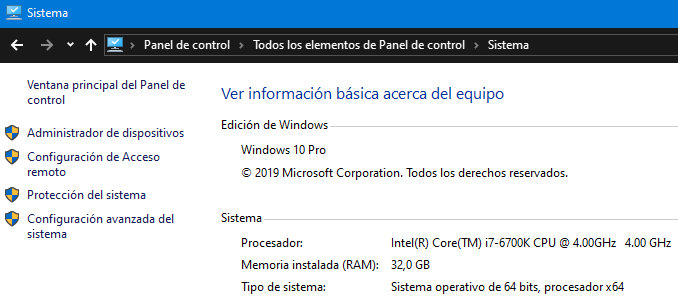
We also have specific applications like CPU-Z that offer all kinds of expanded information, which we recommend for Windows. In Linux, you can use the terminal with the command lscpu | grep "Model name" and on Mac, the same with the command sysctl -a | grep machdep.cpu.brand_string.
In all cases, knowing the model name, you can search Intel's product specifications page to obtain details on the number of cores, frequencies, caches, integrated graphics (if applicable), socket and chipset used, and all kinds of information, including performance comparisons with other models.
Intel Processors: General Identification
Intel uses an alphanumeric scheme to identify its processors. This can be used generally for all marketed platforms, although Intel has varied it over the last two generations. A higher processor number in a class or family usually indicates more power or features, but not always, because the mix of architectures and the multiple suffixes added complicate the choice. We explain it to you in detail by analyzing the following image:

Brand. The diagram begins with the different brands that the manufacturer markets for its processors. Currently, the main one is Intel Core, and it covers all types of computers. From desktops to mini-PCs to large enthusiast-grade towers and the entire laptop group. Intel Pentium and Intel Celeron are lower in performance, intended for entry-level computers, while Intel Xeon is used in workstations and servers.
Brand modifier. It is only used for the Core brand and can be found in i9, i7, i5, and i3. A higher value usually indicates higher performance, although not in all cases or for all tasks.
Numeric digits. These are the numbers that precede the brand modifier. Generally, there are four numbers for Core models, as Pentium, Celeron, and Xeon can include others, and it consists of two parts:
Generation indicator. This is the first number. In the example image, the number "9" corresponds to the ninth generation of Core processors. If it were "10," it would indicate the tenth generation; "8" represents the eighth, and so on.
SKU (Stock-keeping unit or reference number) numeric digits. Identifier used internally to track a product. A higher number usually reflects higher performance.
Optional suffixes. Probably the most difficult to understand for an average user because there are quite a few. They are always placed after the number and can indicate the line where the processor is focused, special features, and, in the latest generations, the integrated graphics included. This is a key indicator because it can highlight consumption or performance. Here are the most commonly used ones:
"G1-G7" – Integrated graphics level in processors that include it.
"U" – Low voltage for laptops.
"Y" – Ultra-low voltage for laptops.
"H" – High performance for laptops.
"HK" – High performance and unlocked multiplier for laptops.
"HQ" – High performance for laptops; quad-core CPU.
"K" – Unlocked multiplier for easier overclocking.
"T" – Low power for desktops.
"S" – Special Edition. These are usually the highest-performance models in a series.
"X" – Superior HEDT performance
"XE" – Maximum performance HEDT Extreme Edition
"XS" – Special and unique model for desktops with eight active cores at 5 GHz.
"E" – Embedded systems. They cannot be upgraded.
"G" – Includes discrete graphics on the die, the Vega GPU in collaboration with AMD.
Intel 12th Gen Processors – Alder Lake
We start with Intel's big news for 2021. It hasn't yet hit the market (it will in the last half of the year), but we're highlighting it because it will be the most important in many years due to its changes at the silicon level, improved 10 nm++ 'SuperFin' technological processes, and the use of a hybrid architecture that will bring the big.little design philosophy proposed by ARM and widely used in devices such as smartphones to PCs.
The basic idea is to combine high-performance CPU processing cores with lower-power, yet more efficient, cores to balance performance, power consumption, and final retail price. The jump to DDR5 RAM and the PCIe 5.0 interface is expected, making them incompatible with all previous versions. This is something users should keep in mind if they plan to upgrade their equipment this year.
Alder Lake will cover all market segments where Intel operates. Its identification will be easy to follow, taking into account the above. One of the confirmed desktop models (Alder Lake-S) is the Core i9-12900K, where we see the Core brand, the i9 identifier, the number "12" corresponding to the twelfth generation, and the "K" suffix indicating the unlocked multiplier.
Intel 10th and 11th Gen processors – Ice Lake, Tiger Lake, Rocket Lake-S, and Jasper Lake
The mix of architectures and generations released in a short period of time we mentioned is clearly reflected in these two generations. And it can drive you crazy… Intel continues to use the alphanumeric scheme for differentiation, but with some changes.

The main one is that Intel has added a fifth digit to reflect the tenth generation of Core "Tiger Lake" with the number "10." Another new feature is the inclusion of a suffix indicating the level of integrated graphics included:
G7 indicates 64 execution units with Iris Plus graphics.
G4 indicates 48 execution units with Iris Plus graphics.
G1 indicates 32 execution units, but in this case it's not Iris Plus but rather the Intel HD series.
The rest of the identifying values remain the same. Intel has only marketed low- and ultra-low-voltage laptop versions for this generation, with the following models:
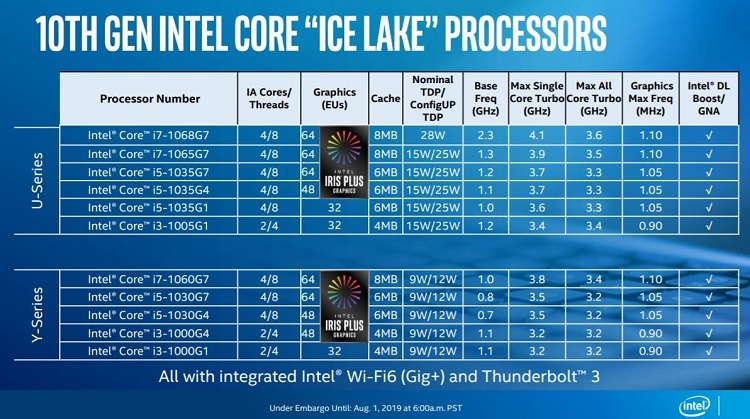
As for the eleventh generation Core "Tiger Lake," it is represented by the number "11" as a generation indicator. Its identification is similar to the Ice Lake series except for the generation. They began shipping in September 2020 with the low-voltage "U" series and have left the similar Ice Lake series behind. Intel announced two other laptop series at CES that it will market based on power consumption and performance:
Intel Core H35. With a TDP of 35 watts, they are intended for ultraportables that require power, but also thin and light designs. An example is the Core i7-11375H, whose identification is self-explanatory. They will be available in computers from major manufacturers this quarter.
Intel Core H45. With a TDP of 45 watts, they are intended for the most powerful laptops on the market. The flagship will be the Core i9-11980HK, which follows the same identification line as the previous ones.
Rocket Lake-S
This is a special series that is also part of the eleventh generation of Core, but is a transitional offering. The goal is to power desktop computers. They will hit the market this quarter alongside new motherboards with Intel 500 series chipsets, which manufacturers have also introduced.
If you've been following us, you're already familiar with these processors. Rocket Lake-S uses the "Cypress Cove" architecture, an adaptation of the Sunny Cove architecture used in Ice Lake chips (10 nm+) to the 14 nm process. In fact, it is expected to be Intel's last platform using this manufacturing process before the final jump to 10 nm with Alder Lake. The Core i9 11900K will be the most powerful of a platform that offers a dozen versions of the i9, i7, i5, and Core i3.
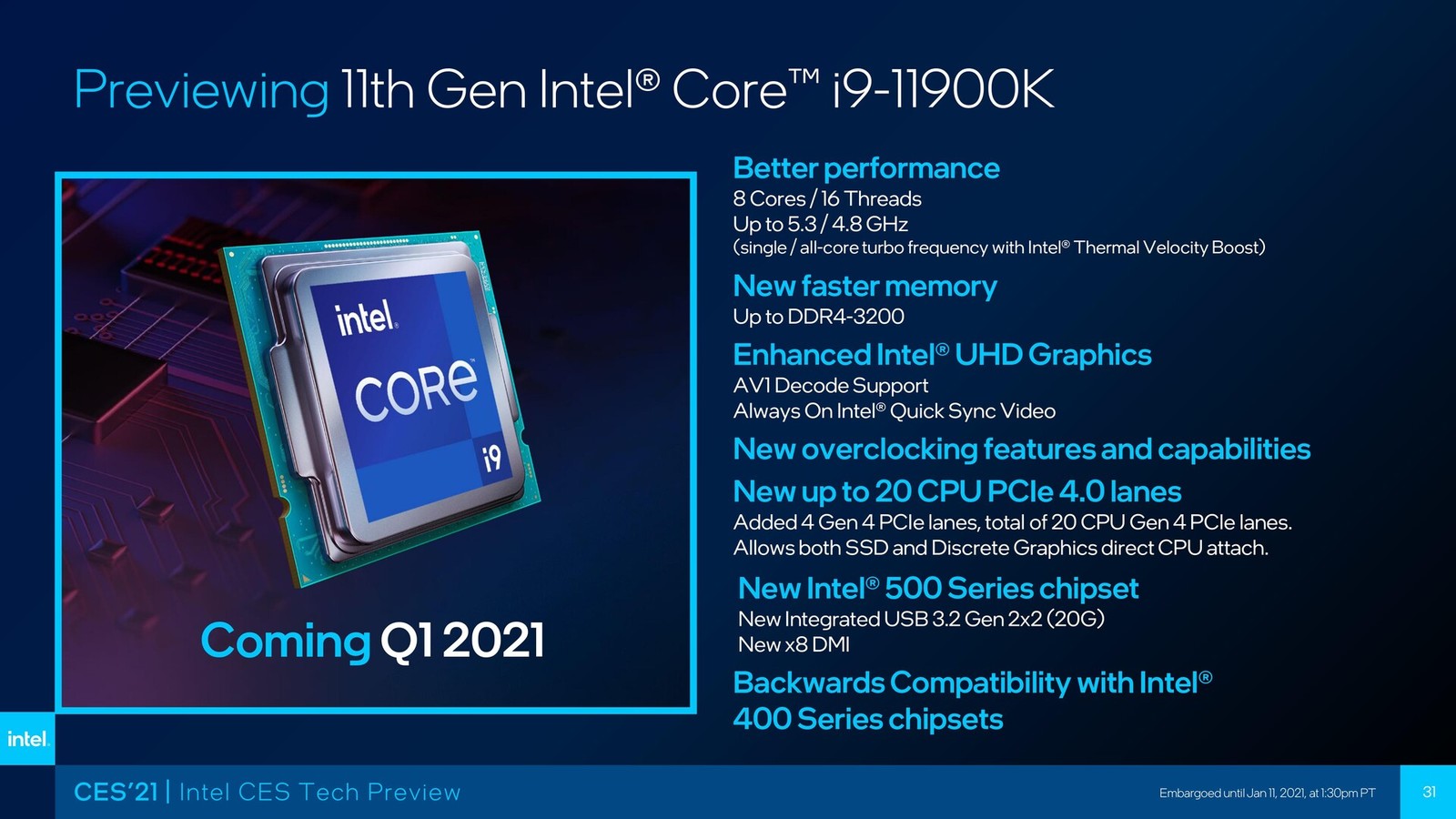
Jasper Lake
The use of PCs as an essential educational tool has accelerated considerably worldwide over the past year due to the COVID-19 pandemic. To meet these needs, Intel unveiled the new Intel Pentium Silver and Celeron N-series processors at CES, new developments aimed at entry-level laptops.
They will be manufactured using 10-nanometer processes, and Intel promises up to a 35% improvement in overall application performance, up to a 78% improvement in graphics performance compared to the previous generation "Gemini Lake," and advanced camera and connectivity features for an enhanced viewing and video conferencing experience. They will support Windows, Linux, and Chrome OS and will be marketed under the "N" series, which will define their focus.
Intel 9th, 8th, and 7th Gen Processors
The identification of the ninth generation of Core processors is explained in the example, although it's worth knowing that two distinct client series were marketed, which can be confusing:
Core 9000 for the consumer market (i9, i7, i5, i3).
Core X, high-performance processors (HEDT) intended for installation in professional workstations or enthusiast-grade PCs, where you'll only see Core i9s.
The first eighth-generation Core processors began shipping in the last quarter of 2017 and have been one of the broadest in Intel's history, with three distinct platforms: Coffee Lake, Kaby Lake R, and Gemini Lake to cover all market segments (workstations, desktops, laptops, AIOs, mini-PCs, etc.) and marketed in models such as Xeon, Core i9, Core i7, Core i5, Core i3, Pentium, and Celeron. Getting into the subject, the eighth generation offers models like the one in the following image:

Intel repeats the aforementioned alphanumeric scheme, and for this series you can find:
Brand: Intel (Xeon, Core, Pentium, Celeron, etc.)
Brand modifier: (i9, i7, i5, i3, etc.)
Generation indicator: in this case, the number 8, which corresponds to the eighth generation of Core processors and includes several architectures, including "Coffe Lake" and "Kaby Lake-Refresh."
Numerical digits: SKU (Stock-keeping unit or reference number). Identifier used to track a product. A higher number usually reflects higher performance.
Optional suffixes: These represent the line (series) of processors and are placed at the end. There are a few in each generation.
"K" – Unlocked multiplier for easy overclocking.
"U" – Low power consumption.
"H" – Higher performance.
"G" – Includes discrete graphics on the same die.
"HQ" – Unlocked multiplier and high performance.
"M" – Xeon Mobile.
"T" – Low-power desktop.
The seventh generation, "Kaby Lake," repeats the same scheme with a brand, modifier, the number 7 (the generation indicator), SKU numeric digits, and the corresponding suffixes.
Other Intel Processors
All of the above refers to the Core brand identification, but Intel also has other processors for sale. We'll review the most important ones and their identification.
Intel Xeon Mobile. The first Xeon series processors for laptops were launched with the Skylake architecture, and the company has been expanding its catalog. The numbering system used has little to do with the previous ones, although they are easy to distinguish by the "M" suffix, which indicates that they are intended for mobile workstations. Let's review them:

Brand: Intel Xeon
Brand Modifier: E3, E5, or E7 Product Line
Product Family: Maximum number of CPUs in a node – Socket type – Processor SKU
Product Line Suffix: "M" in the case of Xeon Mobile for mobile workstations. This suffix is used to track a product. A higher number usually reflects higher performance.
Version: V2, V3, V4…
Intel Pentium. A series for entry-level computers that can be found in desktops, laptops, or mini-PCs. They include an alphabetical prefix followed by a four-character numerical sequence. You'll see dual- and quad-core models with different TDP consumption. They are available up to the 8th generation.
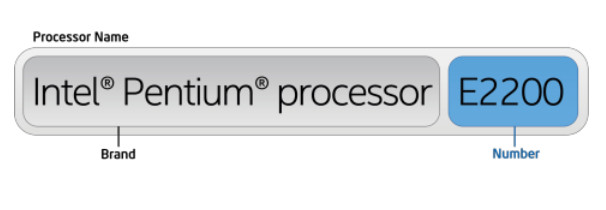
Intel Celeron. A step below the previous models in terms of power, you can find them in a three-digit numerical sequence or a five-character sequence with an alphabetical prefix and four digits, depending on the processor type. You can also find eighth-generation Pentiums called "Gold" and "Silver." They are available up to the eighth generation.
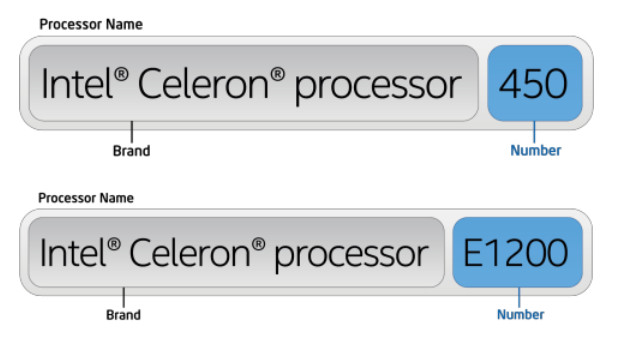
Core M. Ultra-low-voltage models for tablets, 2-in-1s, and convertibles used an alphanumeric scheme followed by the modifier. Sometimes, the processor name ends with an alphabetic suffix representing the processor line. They've disappeared from Intel's lineup in recent generations, but just in case you come across them.

We're here to explore a catalog that's astounding in terms of the number of models, architectures, generations, series, technological processes, platforms, approaches, and features. And that's without even mentioning the technical specifications, sockets, chipsets, and motherboards they're connected to, or other series for the business market, such as the vPro variants with hardware security and management, the Intel Xeon Scalable (servers) or Xeon W (desktop workstations), or other consumer series like the Intel Atom processors, which have since been removed from the catalog but can still be found in older netbooks.
We also haven't even looked at new processors as interesting as the Intel Lakefield processors, because they won't be sold at retail and can't be replaced. This is a novel platform for Intel, as it's the first to combine processing cores from different architectures (as it will do in Alder Lake), similar to ARM's big.LITTLE technology.
If you're familiar with the model, we can mention models like the Core i5-L16G7 that Microsoft uses in the Surface Neo. Following the general identification scheme, we see the Core brand, the i5 identifier, the "L" corresponding to the Lakefield platform, and the "G7" indicating the level of integrated graphics included.
Finally, we recommend this guide, where we select the seven best Intel and AMD processors you can buy today. And if you need to buy CPUs, our favorite retailers, PcComponentes and Amazon, have a great selection for retail sales.
Autor Juan Ranchal
Fuente MuyComputer
